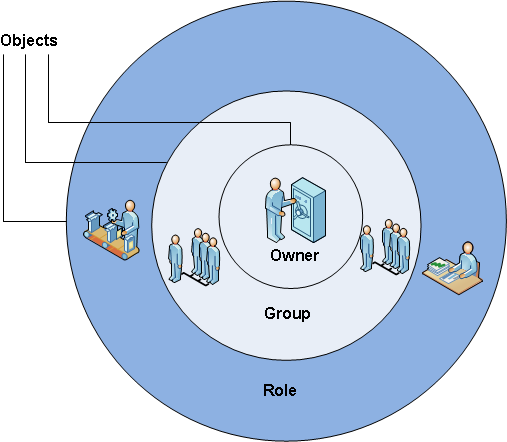Objects can be secured by owners, groups, and roles
Security for specific objects can be applied by owner, group, and role.
See Scenarios for opening objects and attempting actions.

Security for specific objects can be applied by owner, group, and role.
See Scenarios for opening objects and attempting actions.
